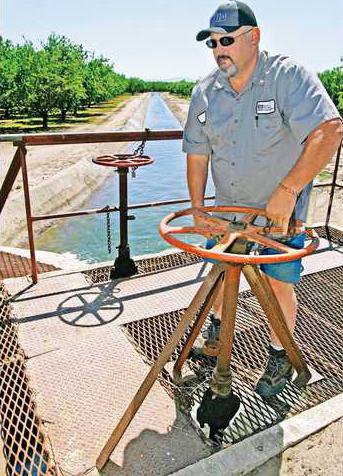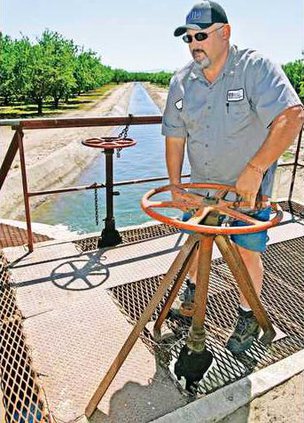South San Joaquin Irrigation District is pumping another $14 million into the economy.
The SSJID board Friday awarded a $14 million contract to Knife River Construction to put in place a state-of-the-art pressurized water delivery system for 4,000 acres of farmland in Division 9 located south of Manteca and west of Ripon. The area contractor that uses local subcontractors is expected to put over 100 people to work.
The move to invest in state-of-the-art irrigation delivery systems aimed at protecting the environment, stretching water supplies, and increasing crop production efficiencies is part of a deliberate strategy by the SSJID board to maximum the benefits of the Tri Dam Project. Since the Great Recession started four years ago, the SSJID board has almost quadrupled annual investment in capital improvements to the irrigation and wholesale power system.
Not only has the district been able to save anywhere from 10 to 25 percent of the cost of work as material prices have dropped but the more competitive atmosphere has prompted bidders to sharpen their pens.
The district has invested more than $60 million in capital improvements since 2007. That includes increasing the power generation capacity of the Tri-Dam Project as well as at SSJID’s Tulloch Reservoir. That, in turn, will generate millions of more dollars in revenue annually for the district.
Currently the SSJID’s share of Tri-Dam proceeds after system costs are met can range from $12 million to $18 million annually. That is the district’s 50 percent share with the rest going to Oakdale Irrigation District. Revenue for Tri-Dam shot up significantly after the original 50-year bonds were paid off. The district’s reserves even with the latest $14 million project are approaching $70 million.
The SSJID plans to use the Tri-Dam proceeds to also deliver on a promise to reduce retail power costs 15 percent across the board in Manteca, Ripon, and Escalon as well as the surrounding countryside by acquiring the retail delivery system from PG&E.
The district has been paying cash for most of the improvements they are making. The exception was several years ago when Sacramento threatened to take unused property tax receipts to balance the state budget. The district board reluctantly borrowed money to tie up property tax receipts so that property taxes collected to pay for irrigation operations wouldn’t go instead to plug a hole in the state budget. The district hasn’t raised property taxes in more than 25 years.
Cutting edge project starts July 1 in area south of Manteca
Construction will start on the Division 9 project on July 1. The target for completion is mid-February of 2012.
It wil involve installing more than 30 miles of pipeline installing meters than can be read remotely, and automation of water gates.
When completed farmers south of Manteca will employ California’s most efficient irrigation methods.
Pressurized lines will replace open irrigation canals. All growers within Division 9 have signed to receive pressurized service. Several opted not to use the pressurized water system initially but have paid for service in anticipation of future needs. That means 78 landowners have signed on for valves to connect with the system representing 87 parcels.
In addition, a district wide grower’s survey indicated there is a high interest in other parts of the SSJID territory from farmers interested in pressurized lines to conserve water.
SSJID General Manager Jeff Shields said the Division 9 effort is being pursued as a demonstration project. If results are successful, Shields said hopefully pressurized systems can be extended to other areas of the district.
The pressurized system will reduce water waste through evaporation and will direct water where it is needed to the roots of plants and crops.
It also will help resolve an ongoing issue of salinity. The SSJID often has to augment water delivered to the farmers in the area as it is at the extreme end of the delivery system. They do that by pumping ground water and injecting it into irrigation lines. The only problem is the ground water has a growing salinity problem. When it is applied to crops it can slowly kill the roots.
Farmers need to be able to flush the soil with enough water to push the salts down and away from the roots. That sends it to the water table from where the SSJID does their supplemental pumping from. That in turns puts salt-laden water directly on the crops or tree roots.
A closed system would eliminate the need for pumping by sending water under pressure to the far reaches of the district.
The system will also eliminate pumping for ground water that in turn will reduce power bills for farmers.
In addition studies have shown water applied under pressure to where it is needed can substantially increase crop yields.
The SSJID board has made putting the Tri-Dam benefits to work for all within its boundaries - farmers and city dwellers - since the district was made possible 102 years ago via bonding on all property.
Tri-Dam fuels SSJID investment
Latest move will save water, protect environment, improve crop production





